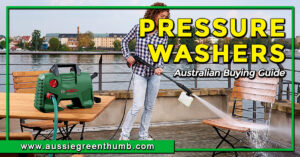Soaker hoses are probably the most important garden accessory you never knew you needed. The vast majority of plants need water at their base, and particularly in the vegetable garden, watering leaves can irreparably damage your crops by promoting mildew and other funguses.
In this article I’ll be guiding you through the best ways to use soaker hoses, as well as when not to use them, but more importantly, we’ve got up to date reviews on the best soaker hoses to buy in Australia right now.
More...
Top Pick

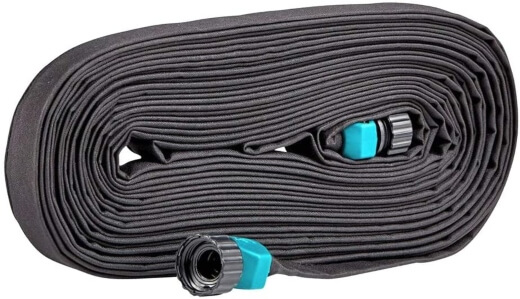
Best Value


Premium Choice


Best Soaker Hoses for 2025
Product | Our Rating | Price | |
|---|---|---|---|
1. Rocky Mountain Goods Heavy Duty Soaker Hose |  |  | |
2. Pope 15m Micro Water Weeper Soaker Hose |  |  | |
3. Hozelock 25m Porous Soaker Hose | 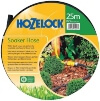 |  | |
4. Pope 15m Garden Soaker Hose |  | ||
5. Hozelock 15m Porous Soaker Hose |  | ||
6. Hoselink 7.5m Weeper Hose |  | ||
7. Hoselink 15m Weeper Hose |  | ||
8. Suneed Garden Soaker Hose | 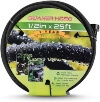 | ||
9. Swan Element Sprinkler Soaker Hose |  | ||
10. Hills 100887 Soaker Hose | 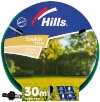 |
What is a Soaker Hose?
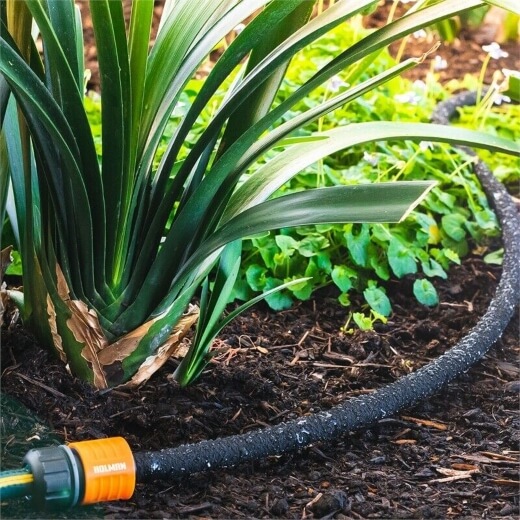
A soaker hose is exactly what it says on the tin, a hose that soaks the earth along its full length, rather than from a hose nozzle at its end. While it’s important to find the right hose nozzle for your garden to make sure you have the ability to water different plants in different ways, no hose nozzle will give you the even soak of a soaker hose.
There are a few different types of soaker hose but, for me, it’s the porous hose pipes that really provide the best way to water veggies. When the hose fills with water the pressure pushes water out of the microscopic holes in the hose wall until you turn the water supply off.
If installed properly around the boundary of the garden, or connected to a standard garden hose and used in the greenhouse, they are the best way to make use of automatic irrigation systems.
Different Types of Soaker Hose

Perforated Soaker Hoses (Soak & Sprinkler Hoses)
Perforated soaker hoses are really useful budget friendly alternatives to garden sprinkler systems. By having even perforations along the full length of the hose, they spray upwards (or downwards if you want them to soak the ground rather than spray).
They are the most versatile kind of soaker hose, but I personally prefer the even distributions of porous soaker hoses.
Porous Soaker Hoses
Porous soaker hoses are typically double lined rubber hoses, with tiny holes all along their length, because the holes are so small and so even they spray and distribute water in a much more natural way that is gentler to the soil, and easier on the plants.
By watering slowly and evenly they limit humidity from sprayed water, and help reduce the chance of blight, funguses and mildew on your plants, and cut out any possibility of breaking leaves - a high risk problem if you water during the afternoon as the sun’s heat is amplified by any water droplets on leaves.
How to Install a Soaker Hose
Most soaker hoses are garden hoses that need permanent homes. Obviously it’s fine to reel them in and just use them through summer, but they are most effective when set up in a constant position, either in the greenhouse or along hedges. With product #9 you would only put it out when you are going to use it.
Whatever you do, make sure they are pegged down to the soil so they don’t move around. When you decide where to put your hose, peg them down using tent pegs and then simply connect them to the tap. Whenever the tap is on your hose will be watering.
Dependent on where your tap is and how many permanent soaker hoses you have installed, you can just have your soaker hoses installed and then use a retractable hose reel to connect to the soaker hose you want to use, then disconnect and put your hose away to keep your yard tidy.
Do I Need a Soaker Hose?
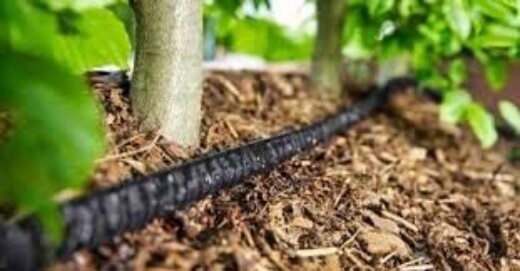
Most of the time when I’m writing these articles I try to give a balanced answer to these questions, but for soaker hoses I have to say a resounding yes. Every gardener needs a soaker hose, no matter the size of your space.
They allow plants to draw their own water in a much more natural way, creating a healthier water table in the garden rather than spraying water on leaves and into the air.


Get Your Free Guide:
Master Growing Australian Natives eBook
A Must Have Complete Guide for Every Australian Garden
Get Your Free Guide:
Master Growing Australian Natives eBook
A Must Have Complete Guide for Every Australian Garden
When you water with standard hoses in high summer, you’ll also be wasting a lot of your water as the droplets evaporate and dissipate into the air rather than reaching the soil.
The splashes from hose watering can also force soil up onto the leaves and stems of plants, which as well as looking messy, leads to infection and disease.
Soaker hoses are the most efficient way to water your garden, and by far the best watering method to maintain good plant health in the majority of garden plants and veggies.
The only time you shouldn’t be using soaker hoses is for pants that require high humidity and enjoy being sprayed or watered from the top like bromeliads or other epiphytic plants.
Soaker Hose Reviews
1. Rocky Mountain Goods Heavy Duty Soaker Hose

This flat soaker hose is made for environmentally friendly materials with an even and consistent seep directly to the roots of plants.
Unlike the Pope hoses it can’t be buried in the ground as the flat flooding hose means that when pressure is reduced it shrinks back, and expands as it refills. The movement of the hose walls can disturb roots but it’s perfect for overground soaking.
Pros
Cons
2. Pope 15m Micro Water Weeper Soaker Hose

Pope’s weeper soaker hose might be just 15m long but it’s really sturdy, and is actually best used by burying it just under the surface of the soil so the water reaches roots even faster.
As well as being a trusted brand, they also sell incredibly good value products for the garden, and this soaker hose is no exception, made from durable materials that will last for years.
Pros
Cons
3. Hozelock 25m Porous Soaker Hose

This 25m soaker hose is more expensive than comparable products from other brands, but great value considering it’s from one of the world’s best hose manufacturers.
The seeping water method was brought to the mainstream domestic market by Hozelock, so they know what they’re doing and they’re so confident that they’ll even supply a 2 year warranty with this hose.
Pros
Cons
4. Pope 15m Garden Soaker Hose
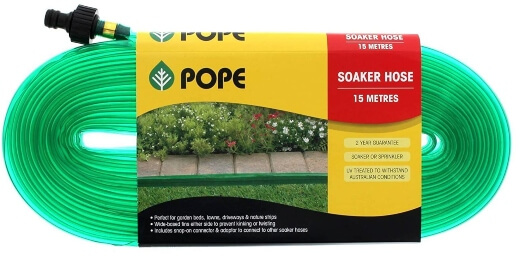
This Pope soaker hose is a really sturdy hose and it’s brilliantly kink resistant with it’s two channel design which wraps up really neatly.
At 15m, it’s not long enough to water the entire entire garden in one go but it’s great for lawns or to run beneath hedges. It’s also got standard connections so can be used in sequence with other hoses to water more of the garden at once.
As a spray soaker hose it’s really versatile, and can be used as a sprinkler alternative, or turned upside down to water directly into the soil.
Pros
Cons
5. Hozelock 15m Porous Soaker Hose
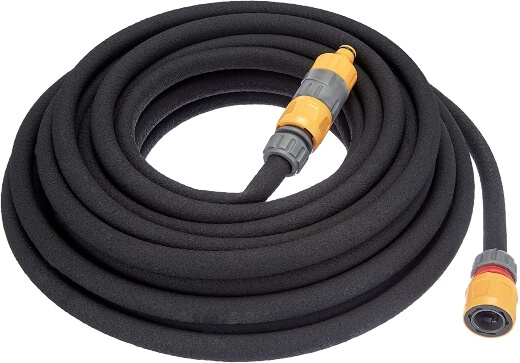
Hozelock’s prices are a bit all over the place, with this 15m hose coming in at over twice the price of their longer alternative (They have a 25m soaker hose).
This Hozelock soaker hose is really effective, incredibly durable and has good resistance to kinking as it expands evenly - especially if laid properly.
Pros
Cons
6. Hoselink 7.5m Weeper Hose
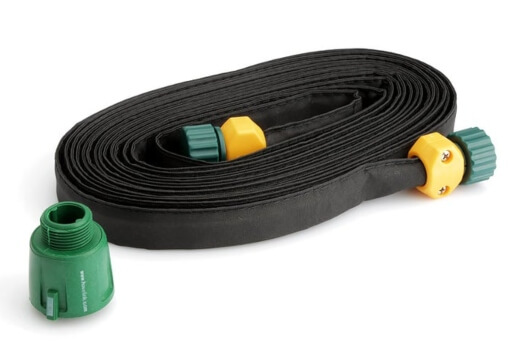
Hoselink’s 7.5m hose is definitely the shortest hose we’ve reviewed here, and while it’s great for a single greenhouse, it’s pretty useless for large gardens where you want to get all your watering done with one tool.
That said, most gardeners using soaker hoses like this will need them for the greenhouse above all else, so this is a great hose from a great brand, and would be perfect for overground greenhouse use.
Pros
Cons
7. Hoselink 15m Weeper Hose

The 15m soaker hose from Hoselink is identical to their 7.5m hose, and they both have clever fittings that help prolong the life of the hose with sturdy pressure resistant ends.
The slow release of this kink resistant soaker hose is probably the most reliable from our review choices, but because it’s a flat hose, it’s unsuitable for burying as it relies on expansion for effective watering.
Pros
Cons
8. Suneed Garden Soaker Hose

I don’t think I’ve ever come across a hose with a 7 year warranty before. The average life-span of a standard garden hose is 10 years. The average life-span of a soaker hose is around 12 years.
Any product with a warranty that covers over half its life expectancy must be pretty confident in itself, so even though this brand is unknown, the hose is clearly well made.
It’s also made from 100% recycled rubber which is a huge bonus for environmentally conscious gardeners.
Pros
Cons
9. Swan Element Sprinkler Soaker Hose
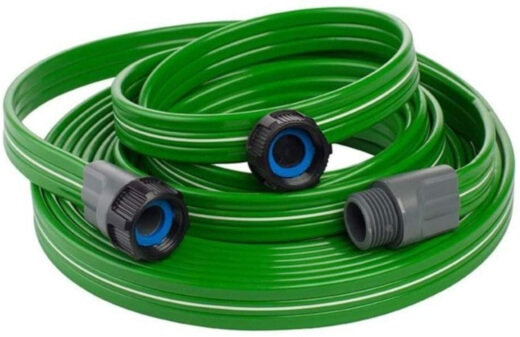
Like all sprinkler hoses, this can be used upside down for really fast soil soaking. Swan’s line of garden products, Element, are typically pretty impressive and usually really well priced.
This soaker hose is really well manufactured and seems sturdy and kink free, but it is a little bit expensive than comparable products, and has quite flimsy fittings, but for long term static use either in the border or under hedges this would be a great addition to the garden.
Pros
Cons
10. Hills 100887 Soaker Hose
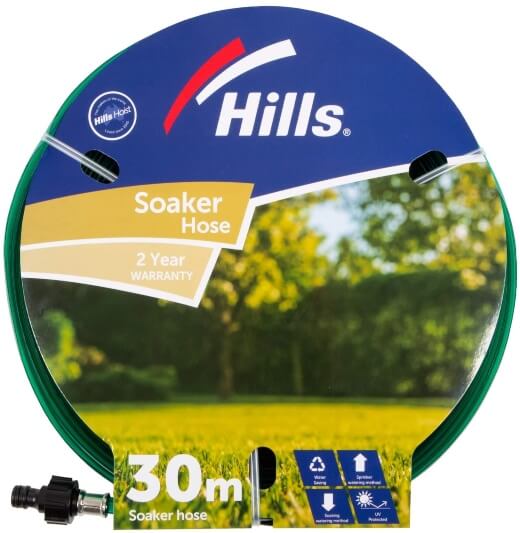
Hills’ Soaker Hose is the longest hose on review here, at 30m long, which is double the average soaker hose. It’s perforations are evenly spaced along its length, making it much better for soaking than most sprinkler hoses, as water contact with soil is every few centimetres.
Pros
Cons
Our Top Picks - Best Soaker Hose Australia
Best Soaker Hose for 2025


If you’re spending money on new tools for the garden, it’s important to check their origins. Are they recyclable? Energy efficient? Made from sustainable materials?
It’s an added burden on gardeners to make sure their gardens are as organic and environmentally friendly as possible, but it adds to the joy of the garden if you’re as connected to the earth as possible.
Rocky Mountain Goods Soaker Hose isn’t the cheapest, but it’s made from 100% recycled rubber, and has really durable fittings. It’s not suitable for burying for general irrigation, but it gets straight to the bae of plants to help prevent fungal problems without wasting a single drop of water.
Best Value Soaker Hose


I’m really blown away with the value of this Pope 15m Micro Water Weeper Soaker Hose. Bunnings soaker hoses are usually pretty pricey, but this new range from Pope is great value, and really effective. It’s shorter than the hozelock soaker hose, but it’s just as durable and can be used underground too for maximum water efficiency.
Premium Choice Soaker Hose


Hozelock are the most trusted brand for a reason - they make the best hoses. With that reputation comes higher prices, but if you want to buy a hose you know you can trust, Hozelock is the brand to go to. Hozelock 25m Porous Soaker Hose is incredibly well made, and comes with a generous 2 year warranty to cover returns and replacements.
Because it’s solid porous rubber it’s safe to bury just under the surface of the soil so you can install it, connect it to your existing pipes, and simply turn the taps on and off when you’re ready to use.
Soaker Hose Frequently Asked Questions
Are soaker hoses worth it?
Soaker hoses are a great investment for anyone trying to establish a new garden on free-draining soil or aiming to keep vegetables happy through Australian summers. They are low maintenance and easy to install, and will save you gallons of water every year.
How long do you leave a soaker hose on for?
Soaker hoses need to run once or twice a week for the best effect. In the middle of summer that might be a little more often, and in winter, it might not even be once a month. Work with your own garden and aim to understand how quickly the soil drains off before setting the water cycle.
What is the difference between a soaker hose and a drip hose?
Drip hoses or drip irrigation is a steady drip of water on location patches along the length of a hose. Soaker hoses do a similar job, but evenly soak the entire garden bed through porous hose walls, leading to more even irrigation, and fewer puddles.
What is the point of a soaker hose?
Soaker hoses have porous walls, allowing gentle, even, and regular watering of your garden at the flip of a switch (or turn of a tap). On automatic irrigation systems, hose or tap timers, soaker hoses can be left to their own devices all summer long too, taking all the worry out of gardening.
How far do soaker hoses spread water?
Soaker hoses, on most soils, will spread water to about 2.5 feet on either side of themselves. This depends on how sandy the soil is, or how heavy your clay might be, as water will travel further through different soil types.
The aim of a soaker hose is to direct moisture right at the roots of your plants.
What is better, a round or flat soaker hose?
Round soaker hoses typically have more durable walls and last longer than flat soaker hoses, which expand along their entire length with every use, and have more brittle walls. Flat soaker hoses can also be damaged by the sun and can crack or expand in frosty weather.
How deep should you bury a soaker hose?
Soaker hoses do not need burying but can be buried up to 15 cm deep to protect them from the sun. When you bury a soaker hose, remember that that water is still getting to the roots of your plants and that the surface may be dry while the subsoil is perfectly moist to avoid overwatering.
Do soaker hoses need to be removed in winter?
Provided you drain the entire hose and disconnect it from the garden tap, soaker hoses are safe to keep outside in winter. Frost can expand and damage your hose pipe in winter, and draining it will remove the risk.
Do soaker hoses spray water?
Soaker hoses do not spray water, instead, they gently seep water from their wall, leaving a gentle trickle at the base which evenly soaks the soil rather than spraying up, down, or to the side.
How much water does a soaker hose release per hour?
Soaker hoses release about 3-5 gallons of water per foot, per hour which is more than enough for any garden plants. If you lower the water pressure from the tap, that can be reduced further for gentler watering in spring or autumn.
Is it better to use a soaker hose than a sprinkler?
Soaker hoses use water more efficiently than sprinklers, but they are not really interchangeable. Sprinklers are ideal for large open areas of lawns, while soaker hoses are perfect for beds, borders, and watering the roots of shrubs and vegetables.
Do you cap the end of a soaker hose?
Soaker hoses need a cap for the end of the hose, otherwise, they will pour water out of the end. Water invariably takes the easiest route, so despite the porous sides of soaker hoses, water will flow to the end, leaving your garden dry, unless you cap the end.
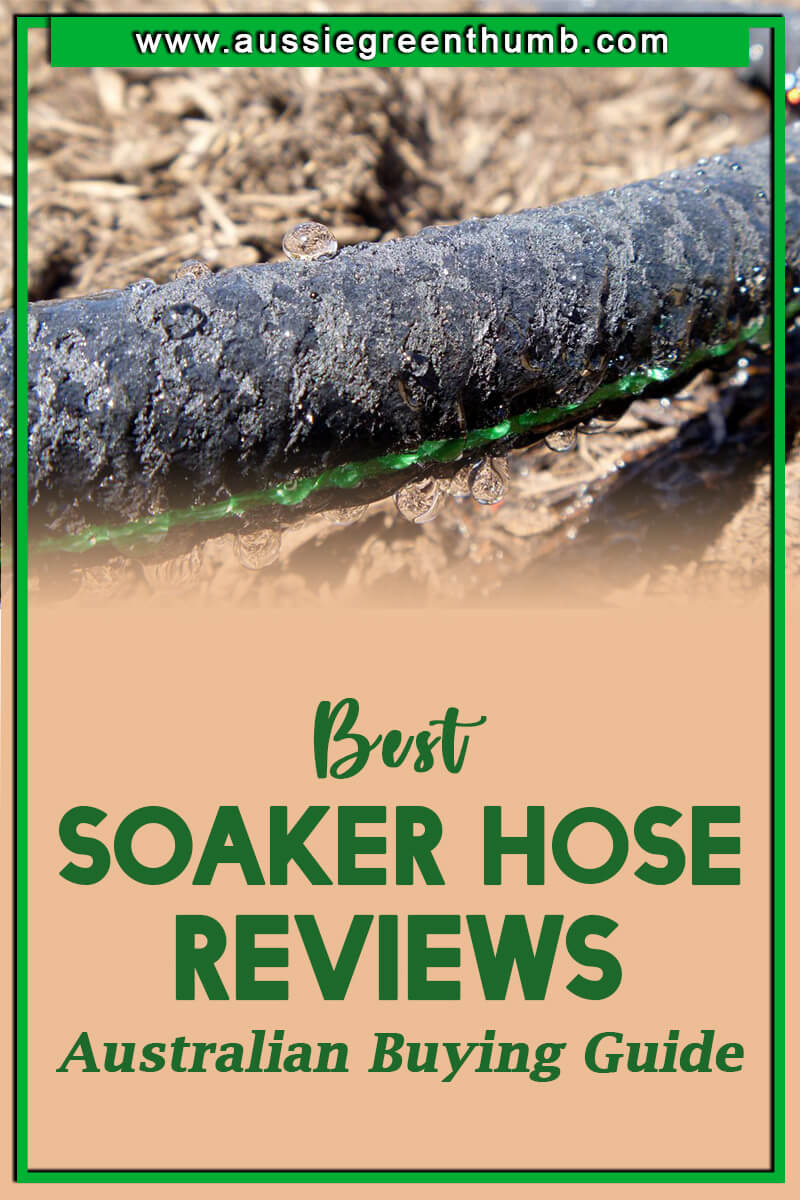
Regulate Your Watering with the Best Soaker Hose on the Market
Whatever soaker hose you choose, you’ll be doing yourself and your garden a favour. As well as helping to reduce your water use in the garden, you’ll be able to regulate your water better.
For me, the best soaker hose is a porous soaker hose, but depending on your needs maybe you’ll be considering sprinkler hoses and perforated soaker hoses instead.
Either way, you’ll be amazed it took you this long to start using one. Like I said earlier, soaker hoses are the best garden tool you never knew you needed.
Published on January 27, 2023 by Gary Clarke
Last Updated on December 23, 2025


